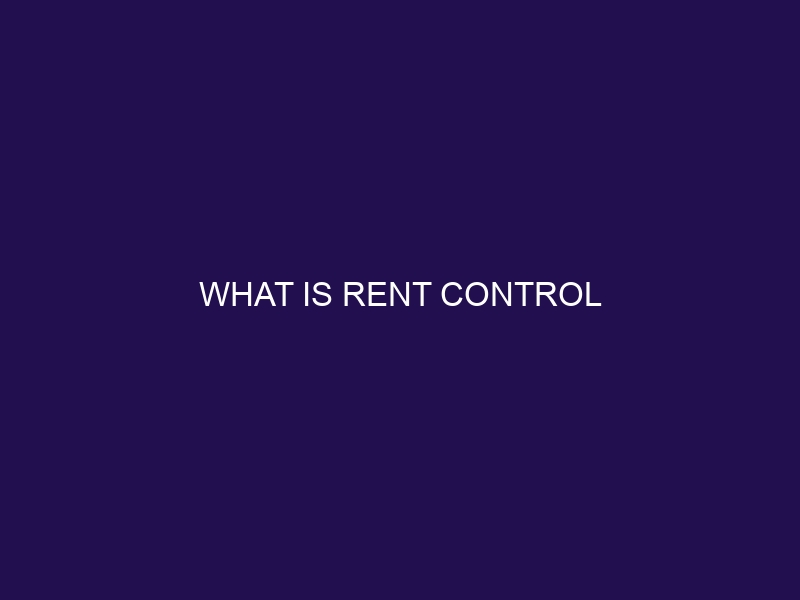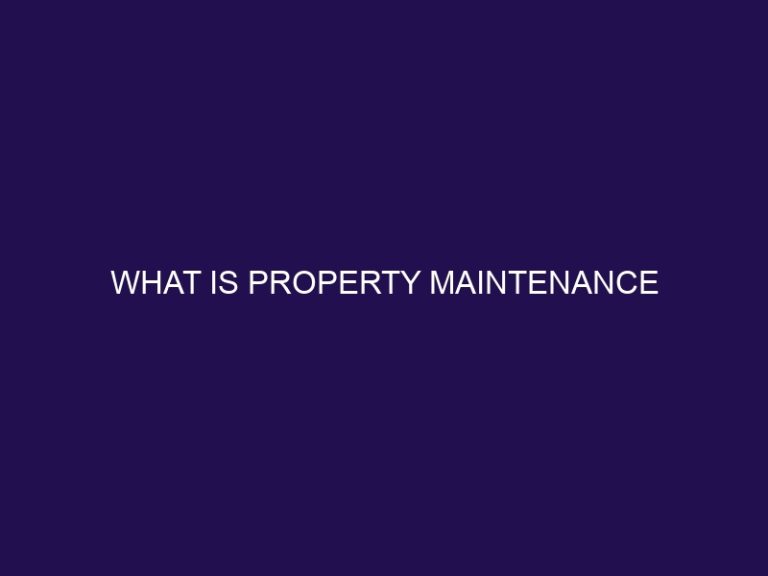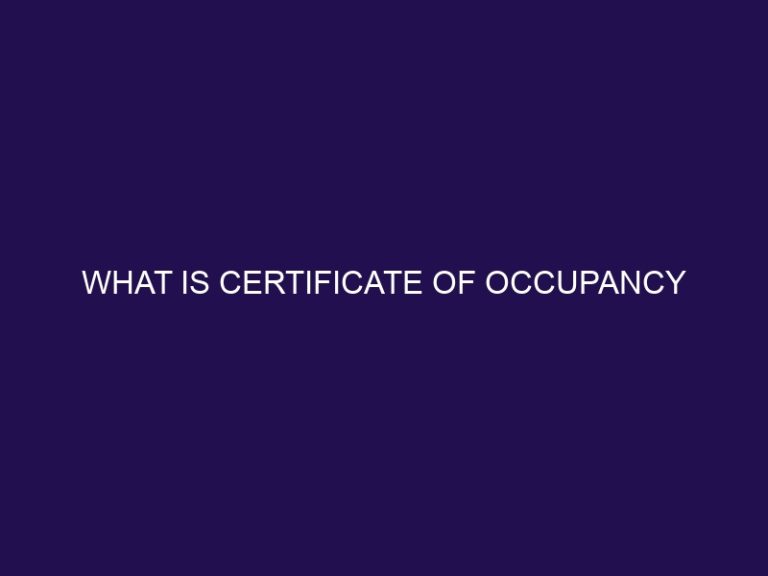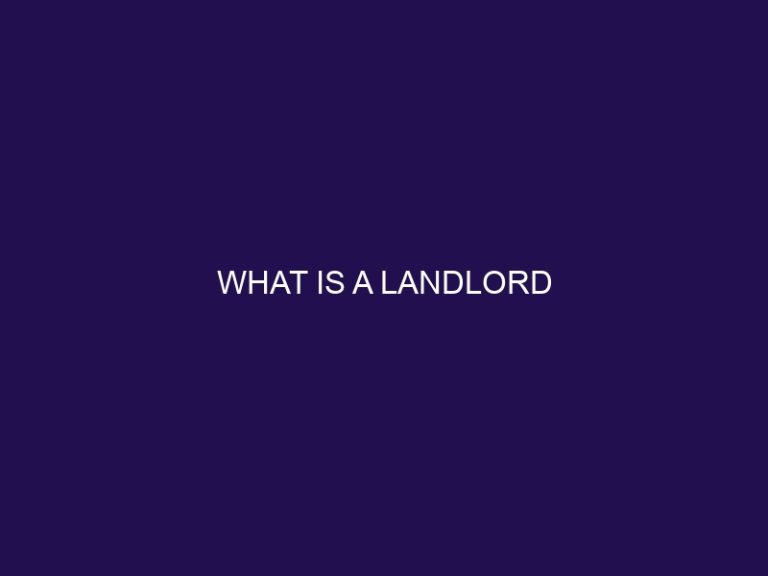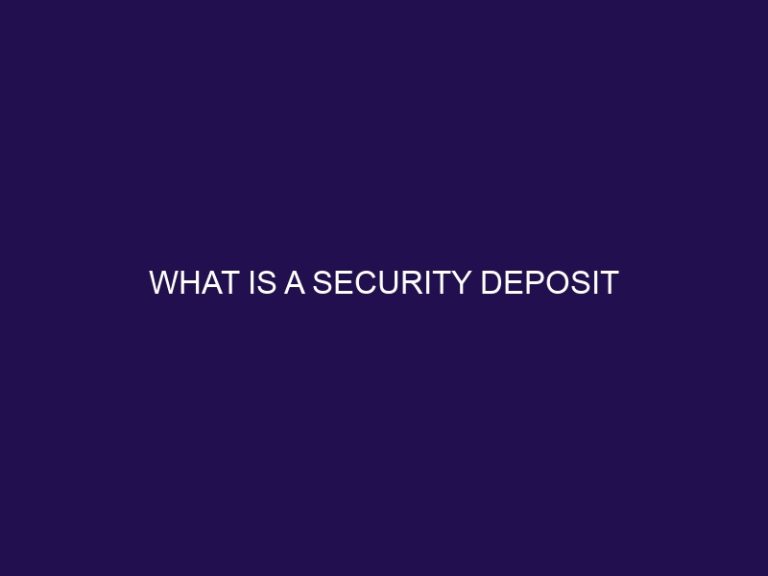What is Rent Control
Rent control is a policy implemented by governments to regulate the prices and increases of rental properties. It aims to protect tenants from excessive rent hikes and maintain affordable housing options in high-demand areas. Rent control has a long history dating back to the early 20th century when it was first introduced in response to housing shortages and rising costs.
The concept of rent control involves government regulations that set limits on rental prices and the frequency of rent increases. These regulations vary by location and can include factors such as tying increases to inflation rates or implementing fixed percentage caps. However, there are often exceptions to rent control, such as for new construction or properties owned by small landlords.
There are advantages and disadvantages associated with rent control. On one hand, it helps provide stability and affordability for tenants, ensuring they can remain in their homes without facing exorbitant rent prices. On the other hand, rent control can discourage property owners from investing in maintenance and upgrades and may create a shortage of available rental units.
Alternatives to rent control include market-based approaches that focus on increasing housing supply and competition, as well as income-based subsidies that provide financial assistance to low-income renters.
The debate over rent control is ongoing, with arguments in favor of this policy emphasizing its importance in providing affordable housing and protecting vulnerable tenants. Conversely, those against rent control argue that it can have unintended consequences and hinder overall economic growth.
Understanding the definition, history, workings, advantages, and disadvantages of rent control, as well as exploring alternative solutions and considering the different perspectives in the debate, is essential for a comprehensive analysis of this complex policy.
What is Rent Control?
Rent control is a hot topic in the housing market, and you might be wondering, what exactly is it? In this section, we’ll break down the ins and outs of rent control, from its definition to its intriguing historical background. Get ready to uncover how rent control impacts both tenants and landlords as we dive into this fascinating subject.
Definition of Rent Control
Rent control refers to government regulations that limit the amount landlords can charge for rent. It is aimed at protecting tenants from excessive rent increases and providing affordable housing options. The definition of rent control, which is the established guidelines for evictions and imposing restrictions on rent increases, varies. The history of rent control dates back to the early 20th century when it was introduced to combat housing shortages and affordability issues. While rent control can help stabilize housing costs for tenants, it has its drawbacks, such as discouraging investment in rental properties and reducing the availability of housing options.
History of Rent Control
The history of rent control dates back to the early 20th century, arising as a response to housing shortages and escalating rents during periods of high demand. Rent control was initially established during World War I in the United States to counteract profit-seeking behavior by landlords who took advantage of the scarcity of housing. Over time, rent control policies have been adopted in various countries worldwide, sparking different levels of success and controversy. Familiarity with the history of rent control is essential for evaluating its effectiveness and exploring alternative approaches to ensure housing affordability.
How Does Rent Control Work?
Discover the inner workings of rent control and how it impacts the rental market. Unravel the mysteries of government regulations on rental prices, limitations on rent increases, and the exceptions to rent control. Dive into the nitty-gritty details of this housing policy and get a closer look at the factors that shape rental markets. From understanding government intervention to uncovering loopholes, this exploration will shed light on the complex world of rent control.
Government Regulations on Rental Prices
Government regulations on rental prices comprise of the establishment of limits on the amount landlords can charge for rent in specific areas. These regulations are put in place to safeguard tenants and ensure the availability of affordable housing options. Rent control boards or agencies are often instituted in certain jurisdictions to oversee and enforce these regulations. Although the specific rules may vary, they generally involve limitations on rent increases and guidelines on acceptable rent amounts based on factors like unit size and amenities. The ultimate purpose of these regulations is to prevent exorbitant rent surges and provide stability for tenants. It is worth noting that rent control laws exist in numerous countries worldwide, including the United States, Canada, and Sweden.
Limitations on Rent Increases
Limitations on rent increases are a critical component of rent control policies. These restrictions are designed to safeguard tenants against exorbitant rent hikes and ensure the availability of affordable housing. A few key limitations include:
| Rent Stabilization: | Rent increases are limited to a specific percentage each year, preventing rents from skyrocketing. |
| Just Cause Evictions: | Landlords cannot evict tenants without a valid reason, providing stability and protection. |
| Temporary Rent Control: | In certain circumstances, rent control may only be applicable for a restricted period, such as during housing crises. |
Incorporating these limitations contributes to a more equitable rental market by curbing unfair rent increases and affording tenants security. Striking a balance between tenant protections and encouraging landlords to maintain and invest in their properties is crucial.
In addition to rent control, complementary approaches like increasing the supply of affordable housing and expanding income-based subsidies can comprehensively address the challenges of housing affordability.
Exceptions to Rent Control
Exceptions to rent control laws exist to provide flexibility and ensure fairness in certain situations. These exceptions, which include new construction, single-family homes, luxury units, subsidized housing, and vacancy decontrol, serve to incentivize developers, accommodate individual landlords, attract affluent tenants, and allow for market rent upon tenant turnover.
Fact: California’s Costa-Hawkins Act, enacted in 1995, established limitations on rent control in the state, exempting properties built after 1995 and single-family homes from rent control regulations.
Advantages and Disadvantages of Rent Control
Rent control can be a double-edged sword, with its own set of advantages and disadvantages. In this section, we’ll explore the pros and cons of rent control, shedding light on how it can both benefit and hinder different stakeholders. From providing stability for tenants to potentially stifling investment in rental housing, we’ll take a comprehensive look at the advantages and disadvantages associated with this controversial policy. So, buckle up and let’s dive into the world of rent control!
Advantages of Rent Control
Rent control offers numerous advantages for tenants and communities. Here, I will highlight some key benefits of rent control:
- Affordability: Rent control provides stability to rental prices, preventing sudden and excessive increases. This ensures that tenants can effectively manage their financial resources.
- Preservation of diversity: Rent control plays a crucial role in preserving diverse communities by preventing the displacement of long-term residents caused by rising rents.
- Increased housing security: With rent control, tenants enjoy greater security and stability in their housing situation, knowing that their rent increases will be limited.
- Long-term tenancy: Rent control encourages long-term tenancy as tenants are less likely to move due to unaffordable rents. This, in turn, fosters stronger community bonds.
- Protection against gentrification: Rent control helps mitigate the adverse effects of gentrification by ensuring that low-income individuals and families can still afford housing in their communities.
In New York City, rent control has played an essential role in preserving affordable housing for decades. It has allowed many residents to maintain their homes and neighborhoods, even amidst rising housing costs in the city. Rent control enables families to stay rooted in their communities, fostering a sense of belonging and stability.
Disadvantages of Rent Control
While rent control can provide benefits for tenants, it is important to also consider the disadvantages of this policy:
- Shortage of rental units: Rent control policies can discourage property owners from renting out their units, leading to a shortage of available housing.
- Reduced investment in rental properties: Rent control may discourage property owners from investing in maintaining or improving rental units due to limited profit potential.
- Unequal distribution of benefits: Rent control can concentrate benefits among current tenants, while future tenants may face higher rental costs and limited housing options.
- Distorted housing market: Rent control can create inefficiencies in the housing market and distort the allocation of housing resources.
While rent control aims to provide housing affordability and stability, it also poses challenges that should be carefully considered.
In true history, rent control has been implemented in various forms across different countries. The first known rent control legislation was introduced in Berlin in 1915 in response to housing shortages during World War I. Since then, rent control policies have been adopted in many cities and countries worldwide, with varying degrees of success and controversy.
Alternatives to Rent Control
Looking for alternatives to rent control? We’ve got you covered! In this section, we’ll dive into market-based approaches and income-based subsidies. Find out how these innovative solutions can address the challenges of affordable housing and create a more balanced rental market. From stimulating competition to providing targeted assistance, we’ll explore the strategies that are reshaping the way we tackle the complex issue of housing affordability. Let’s explore the exciting alternatives that are shaping the future of the rental landscape!
Market-Based Approaches
When it comes to addressing the challenges of affordable housing, market-based approaches, such as zoning changes to increase housing supply and streamlining the development process to reduce costs, can offer an alternative to rent control. These market-based approaches focus on creating a healthy housing market that encourages competition and stimulates investment, ultimately helping to address affordability issues in a more sustainable and efficient manner. Providing incentives for developers to build affordable housing units is another example of a market-based approach. These strategies aim to strike a balance between protecting tenants and ensuring landlords have the incentives to maintain and increase housing stock. By incorporating market-based approaches, we can foster a competitive market that addresses affordability concerns effectively.
Income-Based Subsidies
“Income-based subsidies are a viable alternative to rent control. These income-based subsidies are designed to help low-income individuals and families afford housing without directly manipulating rental prices. The government usually provides these subsidies, which are determined based on the income level of an individual or household. By targeting assistance to those who need it most, income-based subsidies ensure affordable housing options while following a market-based approach. This approach not only enables individuals to access suitable housing, but also fosters economic mobility and mitigates the negative effects often associated with rent control policies.”
The Debate over Rent Control
In the heated debate over rent control, passionate arguments have emerged on both sides. As we delve into this controversial topic, we’ll explore compelling reasons supporting rent control and compelling reasons opposing it. Get ready to uncover the facts, figures, and events that underscore the ongoing discussion surrounding rent control. It’s time to dive deep into the arguments, backed by reputable sources, and gain a comprehensive understanding of this contentious issue.
Arguments in Favor of Rent Control
Arguments in Favor of Rent Control
Rent control has its fair share of supporters who argue that it brings several benefits to communities. Here are some key arguments in favor of rent control:
- Affordable Housing: Rent control helps maintain affordable housing options, preventing skyrocketing rents in high-demand areas.
- Stability for Tenants: It provides stability and security to tenants, allowing them to remain in their homes without fear of being priced out.
- Preserving Diversity: Rent control can help preserve socio-economic diversity in neighborhoods by preventing displacement of lower-income residents.
- Community Cohesion: It fosters community cohesion by enabling long-term residents to stay in their neighborhoods, which can lead to stronger social ties and a sense of belonging.
- Reduced Homelessness: Stable and affordable housing reduces the risk of homelessness, benefiting individuals and society as a whole.
Arguments against Rent Control
Rent control has long been a topic of debate, with critics arguing that it disrupts market efficiency by interfering with the natural forces of supply and demand in the housing market. The primary concern is that by artificially lowering rental prices, it reduces the incentive for landlords to invest in property maintenance and development, as they may not see sufficient returns on their investments. This can ultimately lead to a reduction in the overall housing supply, as landlords may be deterred from building new housing or converting existing properties into rental units if they cannot charge market rent prices.
One of the major issues with rent control is its allocation inefficiency. Rent-controlled units may be occupied by tenants who do not necessarily need the subsidized rental rates, while individuals who are more disadvantaged and in urgent need of affordable housing are unable to secure it. This misallocation of housing resources can exacerbate the housing crisis and hinder social mobility.
Furthermore, rent control can have negative impacts on property owners who rely on rental income for maintenance and investment purposes. The financial burdens imposed by rent control can discourage property owners from making necessary repairs and improvements, leading to a decline in the overall quality of rental properties.
Another consequence of rent control is the lack of housing mobility it creates. Tenants who benefit from below-market rental rates may be disincentivized to move, resulting in reduced housing turnover. This limited housing mobility can in turn limit the availability of rental units for those who are genuinely in need, further exacerbating the housing shortage.
Rent control policies may also inadvertently give rise to black market activities. Tenants seeking more favorable rental terms may resort to illegal subletting or under-the-table payments to circumvent regulations. This not only undermines the effectiveness of rent control, but it also introduces a host of other problems.
Frequently Asked Questions
What is rent control?
Rent control is a government program that limits the amount landlords can charge for rent. It aims to make housing more affordable for lower-income residents. Rent control regulations vary by municipality, but they generally cap rent prices and limit rent increases for existing tenants.
Which local governments implement rent control?
Rent control is not widespread in the United States, and only certain municipalities have rent control regulations. In states like New York, New Jersey, California, Maryland, or Washington D.C., there are 182 municipalities with rent control measures. However, 31 states have laws preventing local governments from implementing rent control.
How does rent control work for existing tenants?
Rent control laws typically limit rent increases for existing tenants. The municipality sets a cap on the percentage that landlords can raise rent each year. If a landlord charges too much or tries to raise rent beyond the allowed limit, tenants can report the violation to the city’s housing authority.
What are the advantages of rent-controlled apartments?
Rent-controlled properties provide stability for tenants, as they won’t have to worry about paying more than what the city deems appropriate. Rent payments are capped at the maximum, and any increases are limited to the levels set by the municipality. This allows tenants to choose a home they can likely stay in for years without the rent becoming a major financial burden. Rent control also increases occupancy rates for landlords and reduces eviction rates.
What are the disadvantages of rent-controlled apartments?
Rent-controlled apartments can be less profitable for landlords, as they are restricted in how much they can charge for rent. Critics argue that rent control reduces the supply of housing, as landlords may choose to convert buildings to condos or prioritize other forms of real estate investment. Additionally, some argue that rent control can lead to a decrease in the quality of housing units due to limited funds for maintenance and renovations.
What is the current market rate and how does it relate to rent control?
The current market rate refers to the prevailing rent prices in a particular area based on supply and demand. Rent control regulations often aim to keep rents below the market rate prices to provide affordable housing options. Rent control can help secure affordable housing for low and moderate-income tenants amidst rising living costs.

